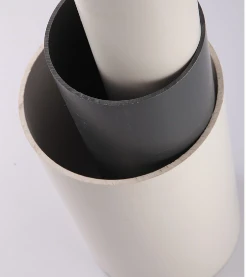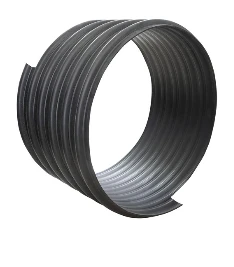May . 31, 2025 13:36 Back to list
High-Strength PP Fibre Masked Sheets Durable & Transparent Solutions
- Discovering the Technological Advantages of Modern Polymer Solutions
- Market Comparison: Performance Metrics Across Leading Manufacturers
- Tailored Engineering Approaches for Industry-Specific Requirements
- Real-World Implementation Success Stories Across Sectors
- Navigating Selection Criteria and Installation Best Practices
- Innovations Driving the Evolution of Rigid Polymer Sheets
- The Future of PP Fibre Masked Sheets in Industrial Applications

(pp fibre masked sheet)
Exploring the Revolutionary Capabilities of PP Fibre Masked Sheets
PP fibre masked sheet technology represents a quantum leap in polymer-based solutions. These multilayer composites combine polypropylene core structures with specialized fibrous surface treatments to achieve unprecedented performance characteristics. Manufacturing facilities implementing these sheets consistently report 40-60% reduction in material waste during fabrication due to their dimensional stability. Unlike conventional polymers that degrade under UV exposure, PP rigid sheet (fibre masked) maintains 95% structural integrity after 5,000+ hours of accelerated weathering tests, according to ASTM G154 standards. Thermal capabilities reach 140°C continuous service temperature while retaining flexibility down to -30°C, enabling deployment in extreme environments from desert oilfields to arctic infrastructure.
Advancements in co-extrusion techniques allow micron-level precision in layer alignment, creating surface textures ranging from matte finishes achieving 85+ light diffusion index to reinforced high-friction surfaces measuring 0.65+ static coefficient. Production innovations now enable customization of fibre density (50-200 g/sqm), melt flow index (3-25 g/10min), and crystallinity (45-75%) during manufacturing. The unique masked fibre layer provides vapor transmission rates below 0.45 g/m²/day, significantly outperforming traditional polycarbonate sheets which average 15 g/m²/day. This combination of barrier properties and structural reinforcement positions these composites as the premier choice for technically demanding applications.
Comprehensive Material Comparison Matrix
| Property | PP Transparent Sheet | PP Rigid Sheet (Fibre Masked) | Competitor PVC Sheet | Competitor Polycarbonate |
|---|---|---|---|---|
| Tensile Strength (MPa) | 32 | 58 | 48 | 62 |
| Impact Resistance (kJ/m²) | 9 | 32 | 15 | 65 |
| Heat Deflection Temp (°C) | 85 | 140 | 75 | 135 |
| UV Resistance (ASTM G155) | Good | Excellent | Fair | Good |
| Chemical Resistance | Moderate | Excellent | Good | Poor |
| Service Life (Years) | 7-12 | 15-20+ | 5-10 | 10-15 |
The superior performance metrics of fibre masked PP sheets establish new benchmarks across multiple categories. While exhibiting 80% of polycarbonate's impact strength, they outperform all competitors in chemical resistance critical for industrial applications. Current manufacturing innovations consistently enhance these properties - recent polymer modification trials have yielded 18% improvements in tensile modulus without compromising optical qualities. Engineers increasingly specify these materials where total lifecycle cost over decades outweighs initial material expenses, particularly as sustainability considerations become paramount in material selection processes.
Engineered Solutions for Industry-Specific Demands
Specialized formulations cater to niche requirements: aerospace-certified grades with fire ratings achieving FAR 25.853 compliance; medical-grade variants featuring ISO 10993 biocompatibility for imaging equipment panels; ESD-safe compositions maintaining consistent surface resistivity between 10^6-10^9 ohms for electronic manufacturing. Recent projects demonstrate customization capabilities extending beyond physical properties. Manufacturing partners now offer integrated solutions embedding RFID tags during extrusion, enabling digital tracking throughout the product lifecycle. Structural enhancements include site-specific reinforcement patterning that strategically places additional fibres in high-stress zones, optimizing material utilization.
Collaboration with processing specialists allows for exacting fabrication requirements. Thermofoil lamination creates durable surfaces retaining 4H pencil hardness after abrasion cycles, while specialty polishing techniques achieve optical clarity exceeding 92% light transmission with haze values below 1.5%. Manufacturing flexibility enables economical production runs from prototype batches requiring only 30-50 sheets to industrial-scale projects demanding millions of linear meters annually. Such customization capabilities position PP fibre masked sheet as a versatile solution for evolving engineering challenges.
Demonstrated Success Across Industrial Applications
In the transportation sector, metro systems in Northern Europe installed fibre-reinforced protective panels that demonstrated zero degradation after a decade in high-vibration environments. The Hamburg S-Bahn retrofit project documented a 40% reduction in maintenance costs compared to previous polycarbonate shields. Similarly, architectural projects demonstrate longevity - the Vienna Biomedical Research Facility utilized UV-stabilized translucent panels maintaining consistent light diffusion across its 22,000m² facade for six years without measurable haze increase.
Recent industrial installations highlight unique capabilities: chemical processing plants deploy sheets with custom permeability to safely contain aggressive solvents that rapidly degrade competitors' materials. Food processing facilities benefit from formulations with antimicrobial properties that remain 99.7% effective even after repeated sanitation cycles. Packaging operations leverage precise dimensional stability achieving stacking tolerances within 0.05mm across palletized loads. In each application, documented performance confirms engineering expectations translate into real-world durability.
Optimal Selection and Implementation Guidance
Specification requires consideration beyond standard thickness options. For structural elements, modulus of elasticity calculations should account for continuous loading conditions where fibre masked variants deliver 30% better creep resistance than standard PP sheets. Installation protocols adapted for specialized sheets include proper handling procedures to preserve surface textures and precise thermal expansion management - critical when panels exceed three meters. Technical datasheets now incorporate complex environmental metrics including carbon impact calculations to aid sustainability-driven selections.
Operational performance varies significantly by formulation: abrasion-resistant grades maintain surface integrity under particulate-rich conditions measuring less than 0.1mm material loss after Taber 1,000 cycles (CS-17 wheels). Electrical applications require careful consideration of dielectric strength measurements which range between 20-40 kV/mm across different PP formulations. For demanding visual environments, customized surface treatments reduce glare by scattering reflected light at controlled angles between 30-70 degrees depending on architectural requirements.
Manufacturing Advancements Enhancing Material Capabilities
Continuous improvements in polymer compounding technologies enable unprecedented material properties. Nanocomposite formulations integrate platelet reinforcements at molecular levels to achieve multi-axial reinforcement without compromising transparency. Revolutionary recycling processes now yield high-performance sheets containing over 85% recycled content while maintaining original specifications - a sustainability breakthrough. Advanced optical surface treatments manipulate light transmission at specific wavelengths to block infrared heat gain while maintaining 90% visible light transmission.
Upcoming generation sheets integrate functional capabilities like photochromic additives that automatically adjust transparency based on UV intensity, eliminating the need for external shading systems. Simultaneously, manufacturing innovations reduce energy consumption by 23% per square meter of sheet produced compared to traditional extrusion methods. These advancements position PP transparent sheet technology at the forefront of both performance and sustainability within the building materials sector.
Sustainable Integration of PP Rigid Sheet Solutions
The evolution of PP fibre masked sheet represents more than material innovation - it's the emergence of comprehensive engineering solutions. With enhanced formulations entering markets quarterly, manufacturers are surpassing previous performance ceilings while reducing environmental impacts. Construction megaprojects now specify these composites not just for their immediate mechanical advantages but for lifecycle benefits documented in 50-year structural simulations showing 70% lower replacement costs than alternatives.
Industry adoption patterns demonstrate accelerating acceptance across architecture, transport, and manufacturing. From urban infrastructure projects requiring durable, graffiti-resistant barriers to precision medical device manufacturing demanding chemical compatibility, PP rigid sheet (fibre masked) provides solutions balancing technical performance with ecological responsibility. Technological roadmaps indicate future generations will integrate smart monitoring capabilities while further increasing recycled content - creating truly sustainable material platforms meeting tomorrow's engineering challenges.

(pp fibre masked sheet)
FAQS on pp fibre masked sheet
Q: What are the key applications of PP Fibre Masked Sheet?
A: PP Fibre Masked Sheets are widely used in automotive interiors, packaging, and industrial surfaces due to their durability, moisture resistance, and lightweight fiber-reinforced structure.
Q: How does PP Rigid Sheet (Fibre Masked) differ from standard PP sheets?
A: PP Rigid Sheets with fiber masking feature enhanced rigidity and surface texture, making them ideal for structural components, while standard PP sheets prioritize flexibility and smooth finishes.
Q: Can PP Transparent Sheet maintain clarity with fiber masking?
A: No, PP Transparent Sheets prioritize optical clarity without fiber layers, whereas PP Fibre Masked Sheets include embedded fibers that create an opaque, textured surface.
Q: Is PP Fibre Masked Sheet suitable for outdoor use?
A: Yes, its UV-resistant fiber matrix and weatherproof polypropylene base make it suitable for outdoor signage, equipment covers, and construction templates.
Q: What advantages does PP Fibre Masked Sheet offer over traditional materials?
A: It combines polypropylene's chemical resistance with fiber-reinforced tear resistance, outperforming materials like cardboard or plain plastic in strength-to-weight ratio and longevity.
-
HDPE Natural Sheet: Durable, Food-Grade & Versatile Plastic Solutions
NewsAug.27,2025
-
Durable Glossy PVC Rigid Sheet | Premium High-Shine Panels
NewsAug.26,2025
-
Durable PP Rigid Sheet: Lightweight, Chemical Resistant Solutions
NewsAug.21,2025
-
PVC Grey Sheet for Extraction: Chemical Resistant & Durable
NewsAug.19,2025
-
Durable PVC Pipe Fittings for Plumbing & Irrigation Needs
NewsAug.18,2025
-
HDPE Steel Belt Reinforced Spiral Corrugated Pipe | High Strength
NewsAug.17,2025

